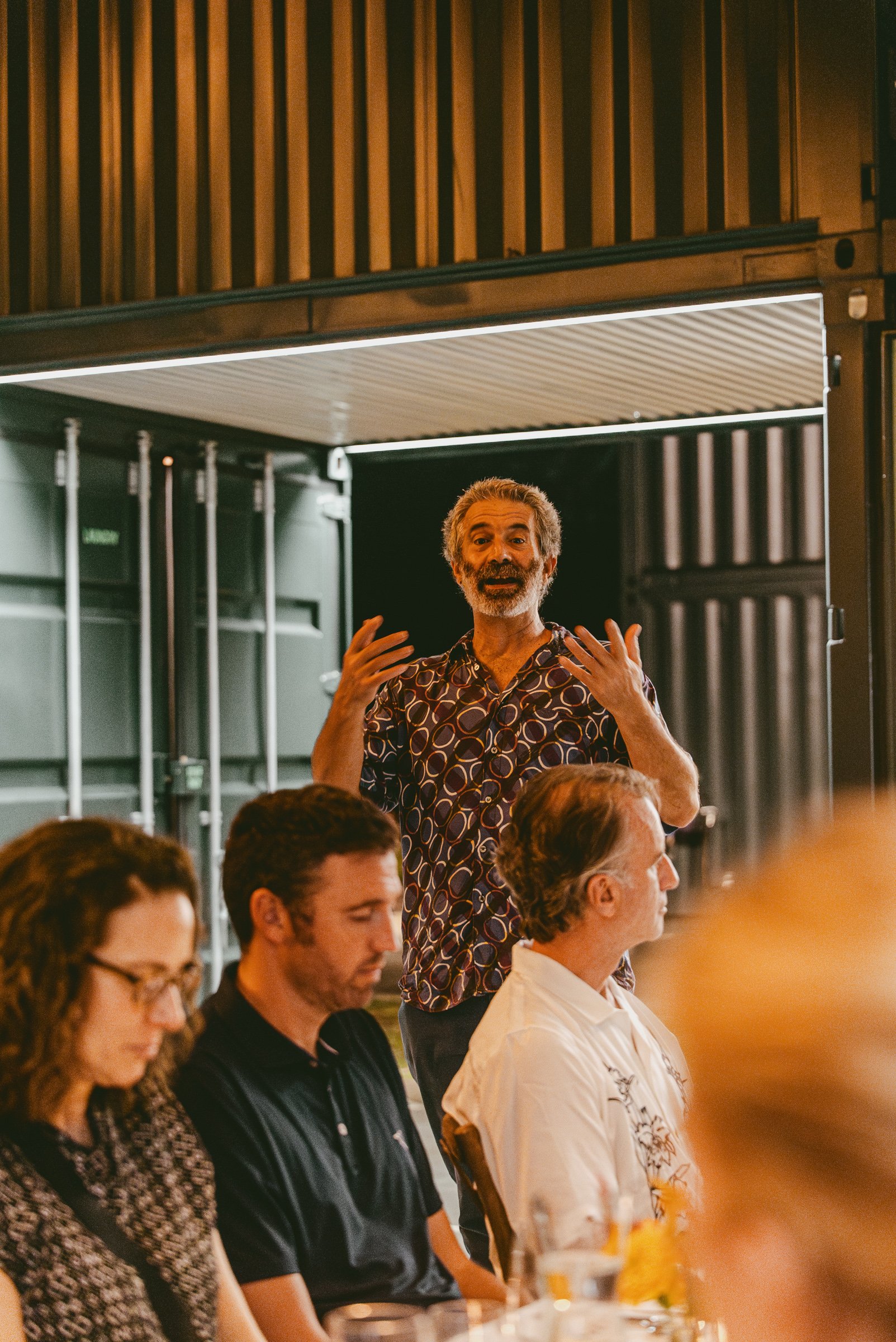Vegetable Ferments with Sandor Katz
It’s a common refrain in sustainable farming that you try to work with nature instead of fighting against it.
But in late summer in North Carolina, Mother Nature is at her most pugilistic. The heat index is high, the humidity percentage is higher, and every living thing - plant, pest, and person - is uncomfortable. (A notable datapoint: the average number of bee stings on the farm spikes in August.)
Nonetheless, we chose August as the perfect time to host fermentation revivalist and book author Sandor Katz for a visit to the farm.
To a small but passionate group of beer, bread, and pickle geeks, Sandor is a demigod. He wrote several of the most authoritative how-to texts on making ferments (Wild Fermentation and The Art of Fermentation are commonly found on the shelves of kitchens, from the most rustic of farms to the highest-end three-Michelin-star restaurants), and he has spent decades hosting workshops and traveling the world teaching people about bacteria and yeast. In his hands, fermentation is a practical and accessible means of transforming agricultural bounty into a more stable, more delicious, and sometimes more nutritious food source.
And now he was coming here, headlining the NC Fermentation Festival which would be kicked off with a collaborative dinner in our Container Barn.
Photos: D.L. Anderson
The dinner was fantastic, a parade of delicious fermented food from Jacob Boehm of Snap Pea Creative Dining, paired with excellent fermented beverages from Botanist and Barrel. Emcee’d by Sandor, each course was a vehicle to dispel a commonly held myth about fermentation. A portion of the proceeds was donated to the Carolina Farm Stewardship Association, which supports sustainable farming practices in the Carolinas.
The next morning we met Sandor back at the farm bright and early to put his knowledge into practice; we set out to find something to ferment.
Even at 9 a.m., the air was thick with moisture, and many of our summer crops had already succumbed to the brutality of the season, sagging heavy on their trellises and generally losing the battle against the pests. But to Sandor, the farm was a buffet of options; every few feet, he would stop with excitement to remark on its fermentation potential. Among the considered? Chicken feed, grape leaves, green tomatoes, okra, peppers, amaranth, honey, onions, to name a few. Ultimately, we decided on peppers – a fermentation candidate as classic as a Kennedy – and Sandor led us back to the demonstration kitchen to get to work.
Now, weeks later, in the fullest part of fall, Sandor’s jar of fermented chili-garlic paste lives in our kitchen fridge, its contents meted out judiciously to make supplies last. Our farm landscape has changed, the fields now blanketed in emerald brassicas and browning leaves sloughing off of the surrounding treeline. The broader agricultural landscape of our region has changed too: just a few weeks after the fermentation event, hurricane Helene wrought unimaginable devastation on Western North Carolina. Farmers in the mountains have been left with fallow, toxic fields where abundance once was.
We try to work with nature, but after centuries of antagonism from the extractive activities of humans, she’s not always in a collaborative mood. We are reminded of this every August, increasingly hotter and buggier than the one that came before, and as we reckon with the realities of 100-year storms that now come annually.
And still, there is abundance, as our walk around the farm with Sandor made plain. Within the practice of growing and preparing food to feed a community, combining methods like sustainable farming and fermentation create resiliency and access to an increasingly fragile, perishable bounty, and by doing so, make small repairs to our working relationship with the natural world.





















